Yuriko & Shigeyoshi Morioka and Mike Weber
March 15 to 17, 2018
Opening reception: 6pm to 8pm March 15, 2018
薪窯陶器
森岡成好, 由利子
マイク ウエバー
3月15日、16日、17日 2018年
オープニングレセプション:3月15日 午後6時から8時

Wood Fired Ceramic
Mike Weber

It has been more than 20 years since we met Mike Weber.
His own unique form reminds us of Iga or Shigaraki Style.
A pile of clay sitting outside of his studio was the cheapest clay he purchased a few decades ago.
He is perfectly capable of creating smooth pieces of pottery on a wheel due to his forty-five-year career as a potter; however, most of his pieces appear naturally distorted. The secret of this form is the cheap clay.
He twists, holds down, and wrestles with the resisting clay on the wheel, as if taming a wild horse. And thus, naturally distorted shapes are formed.
And then the pieces are glazed with Shino and fired in a ANAGAMA kiln. He uses the most expensive woods to fire the pots, “Red Pine”, through the entire firing process.
It is only possible to do this because he is surrounded by a red pine forest.

At thirty-years-old, in 1972, Mike started his life in a forest near Lake Superior in Northern Wisconsin.
He built his own cabin and a large wood kiln.
Surprisingly he was living without electricity, gas or running water for his first six years there.
Waking up in wildness, going to the stream to get water, he managed to maintain a self-sufficient lifestyle while producing his art pieces.
He created many colorful tile sculptures influenced by Spanish artists like Joan Gardy Artigas, a disciple of Miro. Then he encountered the Japanese culture of Zen and the tea ceremony in the beginning of 1990’s.
Fascinated, he researched the culture and became aware of something similar within himself.
His life in the wilderness for six years was similar to a Zen monk’s ascetic practice in the mountains questioning himself every day.
His style changed completely in his pieces, rice bowls, water pots, vases, were now inspired by the Japanese tea ceremony.
Though he never learned Japanese pottery, he was pursuing a new style. In 1996 he met Shiro Tsujimura in Japan, who advised him to build a smaller kiln. Mike has build five kilns by now.
The last kiln he built was “Rocket Sing” in 2012; the simple structure allows pieces that require shorter firing. Moreover, it allows natural glazes to appear more beautiful.
It has been five years since his last his exhibition in 2013. This exhibition is a match of wood firing with Shigeyoshi and Yuriko Morioka.
This is a competition in which the artist is able to give a greater impression on the hearts of people.
Look forward to seeing this match:
USA vs Japan!
Yuriko, Shigeyoshi Morioka

Amano in Wakayama Prefecture
It was in 1974 that they built a kiln on the Land in Amano in Ito County near Mt. Koya in Kii Providence. Located in the middle of the mountains on Kii Peninsula, south of Kyoto, Osaka, and Nara, the place has a trace of human settlement dating back to 25,000 years ago.
An introduction from Nana Yamazaki of the Sanga Project lead us to have this exhibition of the couple; however, we were familiar with the husband, Shigeyoshi-san’s Takashi Nakazato inspired appearance and art style. Shigeyoshi-san is also the master teacher of sculptor Joy Brown.
His clay texture is simplicity itself; the shape of his pieces gives us the impression of his playfulness and decisiveness, as if their shape was unintentional. In addition, his unique appearance makes a strong first impression.


The wife, Yuriko-san creates celadon pieces. The large vases' dignified features remind us of the Joseon style. The remaining sand on the bottom from the firing and the sophisticated lip shapes are distinctive characteristics of her work.
The exhibition in March is a joint show with the wood-fired potter, Mike Weber from Wisconsin.
Mike Weber と森岡成好、百合子夫妻の薪窯陶器
マイク ウエバー とはかれこれ20年以上の付き合い。
伊賀、信楽というスタイルに見えて、独自の物作り。
土は一番安い土を何十年も前に何トンか買って、スタジオの外に山になって置いてある。
45年以上のキャリアなのだから当然轆轤など真っ直ぐすっと出来てしまうはずなのだが、
なぜかマイクの作品は程よく歪んでいるものが多い。これが安い土の秘密。
轆轤の上で暴れ馬のように跳ね回る土をねじ伏せ、押さえ込み、なだめて形にして行く。
そのために自然な歪みが出来るのだそうだ。
それに志野釉を掛け薪窯で焼く。薪としては高価な赤松を最初から最後まで使って焼成する。
マイクの森は赤松の森なので、それが可能なのだ。
1972年30歳のマイクはウイスコンシンの北、スぺリオル湖の近くの森の中で生活を始める。
自分が住むためのキャビンを立て、大きな穴窯を建てた。
驚くなかれ、最初の6年間は電気もなくガスもなく、水道すらない生活をしていた。
自然の中で目を覚まし、小川へ降りて水を汲み、自給自足で生活をしながら作陶の日々を送っていた。
スペインのアーティスト、ミロの弟子のジョアン アルティガスと出会い、タイルやカラフルな彫刻作品を
たくさん作っていたマイクは、90年代の初旬に日本の禅や茶湯文化に出会う。
興味を惹かれ、調べていくうちに自分の中にも同じようなものがあることに気づいたという。
まさにそれは森に入って最初の6年間、自然の中で住み、自問自答して過ごした日々が日本の禅僧が山にこもって
修行するのと同じく、マイクを高みへと導いたのである。
そこでマイクの作風は一転する。茶碗、水指、花入などの日本の茶湯に影響されたスタイルに傾倒して行くのである。
日本で修行することなく日本の陶芸に傾倒していったマイクは、1996年、日本に行き辻村史郎氏に出会う。
そこで小さい窯を建てるように勧められ、現在までに5つの窯を建てることになる。
最後に建てた窯は、2012年のロケットシング、作りもシンプルで焼成時間も短くてすむ上、自然釉のかかりが
素晴らしい。
2013年の個展以来、5年ぶりの展覧会になる今回は、森岡夫妻との穴窯対決だ。
どちらがより多くの人の心を揺さぶる、幸せになる作品を作れるかを競い合う対決だ。
大歓迎の日米穴窯合戦に乞うご期待。
森岡成好、由利子夫妻
紀伊の国 高野山の近く、伊都郡 天野の地に窯を構えたのが1974年だそうだ。
京都、大阪、奈良の南、紀伊半島の山の中で、2万5千年前から人が住んでいた痕跡がある場所だ。
サンガプロジェクトの山崎ナナさんの紹介で展覧会をする運びとなったが、彫刻家のジョイ ブラウンの師匠でもあったり、
成好さんが中里隆先生に影響を受けていたりする事で、以前からその風貌、作風は存じ上げていた。
”素朴とは“の見本のような土味、作意の抜けた形に遊びごころと潔さが印象に残る。風貌もまた強烈にユニークだ。
由利子さんは青白磁の作品を手がける。大きな壺は凛とした佇まいで、李朝の頃を思わせる力作。砂高台と繊細な口作りが特徴だ。
3月の展覧会は、ウイスコンシンの薪窯陶芸家 マイク ウエバーとの3人展となる。
























































































